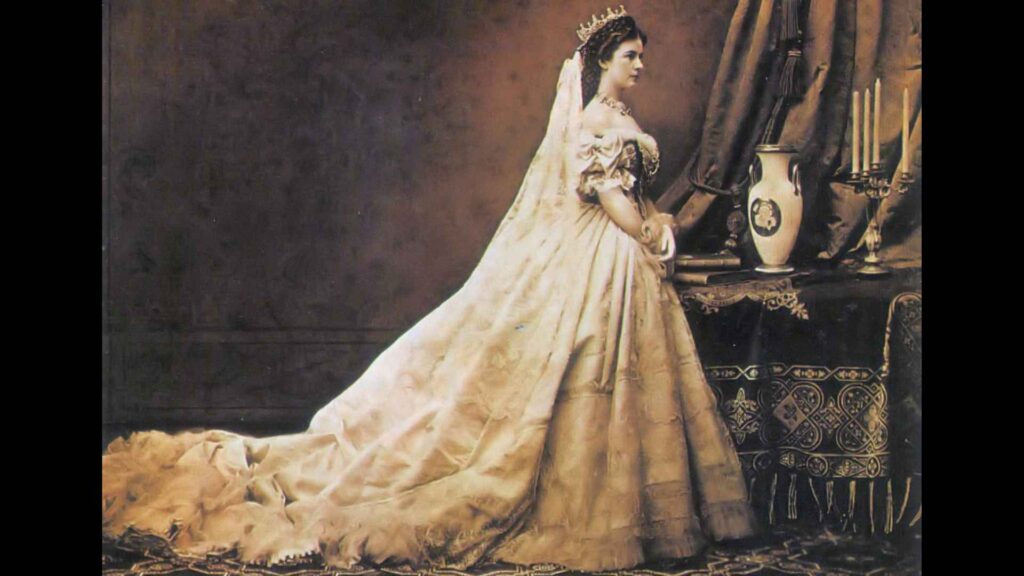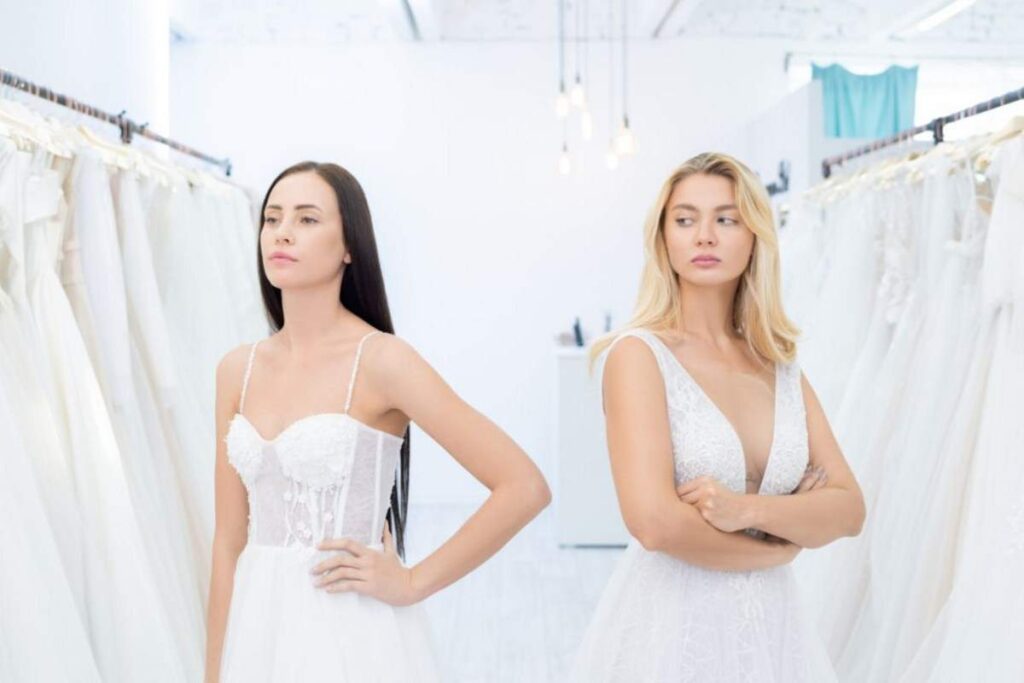A wedding is a joyful, emotional, full-of-love kind of event. They’re also one of those rare moments in life where two people get to be the main characters. And usually, the bride takes center stage wearing a stunning white dress.
One time, a viral tweet lit up the internet after someone wore a sparkling, silver, full-length gown to a wedding. It stirred up a lot of opinions about fashion etiquette, respect, and what’s appropriate. The replies were brutal, and they had a point. It’s clear that people have opinions about what not to wear to weddings.
This viral tweet didn’t come out of nowhere. Yearly, wedding guests push the line, whether it’s wearing white, showing up in clubwear, or trying to upstage the bride. And honestly? That’s just not it. Whether you’re team “it’s just a dress” or firmly in the don’t-mess-with-the-bride’s-moment camp, one thing is clear: wedding fashion etiquette still matters.
Let’s talk about why wedding guest fashion matters, the history behind it, and exactly what you should and shouldn’t wear to avoid being the person everyone whispers about during cocktail hour.
The History Behind the White Dress and Why It’s Sacred
Weddings are deeply traditional events, and many of the customs, like the white dress, walking down the aisle, or throwing the bouquet, go back centuries. In Western culture, the white dress became popular after Queen Victoria wore white for her wedding to Prince Albert in 1840.

Before that, brides often just wore their best dress, regardless of color. But Victoria’s dress was so iconic that it kicked off the white wedding dress trend in Western culture, symbolizing purity, celebration, and the spotlight. Ever since, brides have typically worn white or ivory to stand out on their big day. Fast forward to today, the white dress isn’t really about purity for most people anymore, but it still symbolizes “the bride.”
So when a guest shows up in a white gown, a white jumpsuit, or even a white bodycon mini-dress, it sends a message: “I want to be seen,” “I’m looking for attention,” or “I’m trying to step into the spotlight.” And you don’t want to be that person. Unless you’re specifically told to wear white (like for an all-white party-style wedding), then it’s best you leave that color for the bride.
ALSO READ: 10 Wedding Dress Selection Tips Every Bride Should Know
What Not to Wear to a Wedding
Here’s a quick list of what to avoid as a wedding guest:
Don’t Wear White
Seriously. Don’t wear white. Ever. Just don’t. Off-white, cream, ivory, and pale champagne—it’s all risky. The only exception is if the couple says it’s okay. Some weddings have all-white themes, but if they don’t? Avoid it.
Don’t Wear Anything That Looks Bridal
Avoid it. No lacey floor-length whites, no veils (yes, people have tried it), and definitely no gowns that could pass for a wedding dress. Instead, aim for elegant, fun, and appropriate. You can still look amazing without looking like you’re crashing your own wedding.
Don’t Go Too Sexy
Don’t wear anything too short, see-through, or ultra-revealing. Save the deep-V plunges, sheer panels, and super short dresses for another night.
Don’t Be Flashier Than the Couple
Avoid flashy logos or “look at me” accessories. The energy you give off at weddings should be festive and respectful, not attention-seeking.
Don’t Ignore the Dress Code
If the invite says “semi-formal,” don’t show up in jeans. If it says “garden casual,” don’t wear heels that sink into the grass. Dress for the setting, not just the photo ops. Don’t overdress just to post a photo: If your outfit is more about your IG likes than celebrating the couple, rethink it.

Here’s a trick for you: If your dress is something you’d wear to your own engagement party, bachelorette, or even your own wedding, then it’s probably too much.
What You Should Wear Instead
Now, let’s talk about how to actually get it right.
1. Follow the Couple’s Clues
Start with the invite. Is it Church? Keep it covered. Is it formal, beachy, boho, glam, or backyard? Dress to match their vibe, not to stand out from it. Their style should give you hints. If the invite says cocktail, don’t wear a ball gown. If it says black tie, don’t show up in casual cotton.
2. Color Is Your Friend
Weddings are the perfect time to play with color. Jewel tones, pastels, florals, and even bold prints can be stunning; just avoid white and the bridal party color if you know it. You don’t want to accidentally look like a bridesmaid if you’re not one.
3. Comfort = Confidence
Weddings can last all day and sometimes through the night. You’ll eat, dance, maybe even sweat, so wear something that lets you breathe, move, and feel good. Painful shoes and stiff dresses are not worth it.
4. Respect Cultural Traditions
If you’re going to a wedding with cultural elements like Indian, Nigerian, Jewish, etc., do a little homework. You don’t have to be an expert, but being respectful and thoughtful goes a long way. If traditional clothing is encouraged, try it! Just make sure it’s done respectfully, not like a costume and not over the top.
ALSO READ: 8 Bridal Fashion Trends Set to Dominate 2025
It’s About Respect, Not Just Fashion
At the end of the day, weddings are about more than clothes—they’re about respect, love, and support. They are someone else’s story, and when you’re invited to be part of it, you’re to celebrate them, not steal the spotlight.

That doesn’t mean you can’t look great or express your personal style. You totally can. But looking great isn’t the same as trying to be seen. So don’t wear the dress that’s too white, too tight, too sparkly, or too loud. It’s not about fashion rules; it’s about being a decent guest. Wear something that lets you feel confident, have fun, and honor the couple getting married.
Remember, showing up in style and good manners is a combo that never goes out of fashion. So when in doubt, keep it classy, celebratory, and a little bit humble. You’re not just a guest; you’re part of someone’s once-in-a-lifetime memory.
